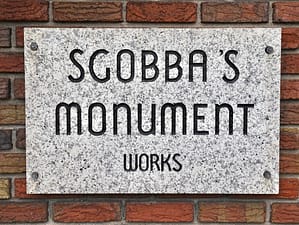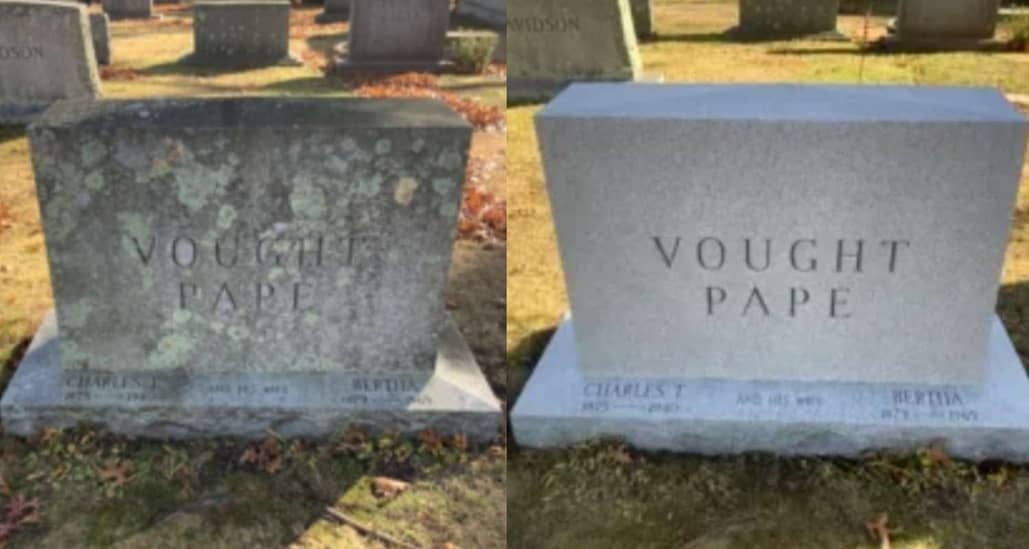Signs That A Grave Monument Needs Restoration
Signs That a Grave Monument Needs Restoration
If you’re looking for signs that a grave monument needs restoration, you’re reading the right post. Fitting and beautiful headstones are necessary for memorializing departed loved ones. The headstones should be a tribute to their personalities. They’re ways to honor the memories left for their friends and family. Those headstones should be taken care of. They’re bound to wear down over time. The chances of their qualities diminishing increases depending on the make of the headstone. Nature and weather will also play a serious factor.
Here are the signs that a restoration is needed which should be spotted early.
The Grave Monument Is Dirty
The headstones on graves will become dirty over time when not treated. The chances of this happening are higher in locations with plenty of inclement weather. Winter snow storms can damage monuments over time. They can also be damaged during summers with plenty of rainy and windy weather, and thunderstorms. Other elements of nature like bird droppings and tree sap can dirty the monument. Those located under trees will need tombstone cleaning more often.
A good cleaning is necessary to make sure the headstone looks good. This should be done before it becomes illegible. Monument companies such as Sgobba’s Monument Works offer grave stone repair and monument cleaning and restoration. If you are in New Jersey and notice your loved one’s monument is dirty, give them a call.
The Grave Monument Is Broken
Grave monuments will be subjected to plenty of elements while outside. If they’re forced to weather too many without proper cleaning, they’ll crack and deteriorate. The wind, rain, snow, and intense heat will lead to cracking conditions over time. Weather changes won’t help with keeping the grave monument clean. Monuments will be more prone to cracking depending on their age.
There’s also a lower chance of the monument being cracked during cleaning processes. Unintended damage can occur during graveyard maintenance duties.
Fortunately, these can be made pristine again through a restoration process. Grave monuments with small or moderate cracks can be repaired. But if the damage is too extensive, a new monument will need to be created.
The Grave Monument is Crooked
There are locations where the ground will frequently freeze or thaw. This process will weaken the soil around the grave monument. If this happens too frequently, the monument will continue to shift thanks to instability. The monument will fall over in more severe instances.
A grave monument that’s slightly askew can be detected if the person is looking at it from a distance. It can also be determined if the person is walking near the monument, and notices a weak ground. This is where a grave monument restoration team should be called. They’ll complete their cleaning process before the monument becomes too crooked.
The Grave Monument Is Sinking
There are times when the foundation around the grave monument itself is simply not good enough. Perhaps the foundation wasn’t poured properly, or wasn’t dug deep enough. It may not have been backfilled properly. It’s also possible these were done well, and vegetation simply got under the grave monument. These issues can lead to the monument sinking over time. If this happens, it can lead to the above issues of broken or crooked monuments.
This is where a restoration team is needed. The group can focus on strengthening or restrengthening the ground around the monument.
The Grave Monument Is Not Granite
Granite is the strongest material to make a grave monument from, because they’re built to last. This doesn’t apply to every grave monument. Older models and monuments were made from marble, limestone, or other materials not durable enough.
There’s no need to replace the entire monument if the damage isn’t too great. Restoration teams will clean and restore these older variants so their history will be preserved.
Signs That a Grave Monument Needs Restoration
There are several signs showing when a grave monument will need restoration. The monument will get dirty over time. Other elements can lead to them breaking when not taken care of, or are subjected to accidents. They will also get crooked or sink thanks to the weather or poor foundations. The monument may also be made of non-granite materials that aren’t as durable. In all these cases, the monuments can be restored when the damage isn’t too great. Make sure to look for these signs that a grave monument needs restoration.

